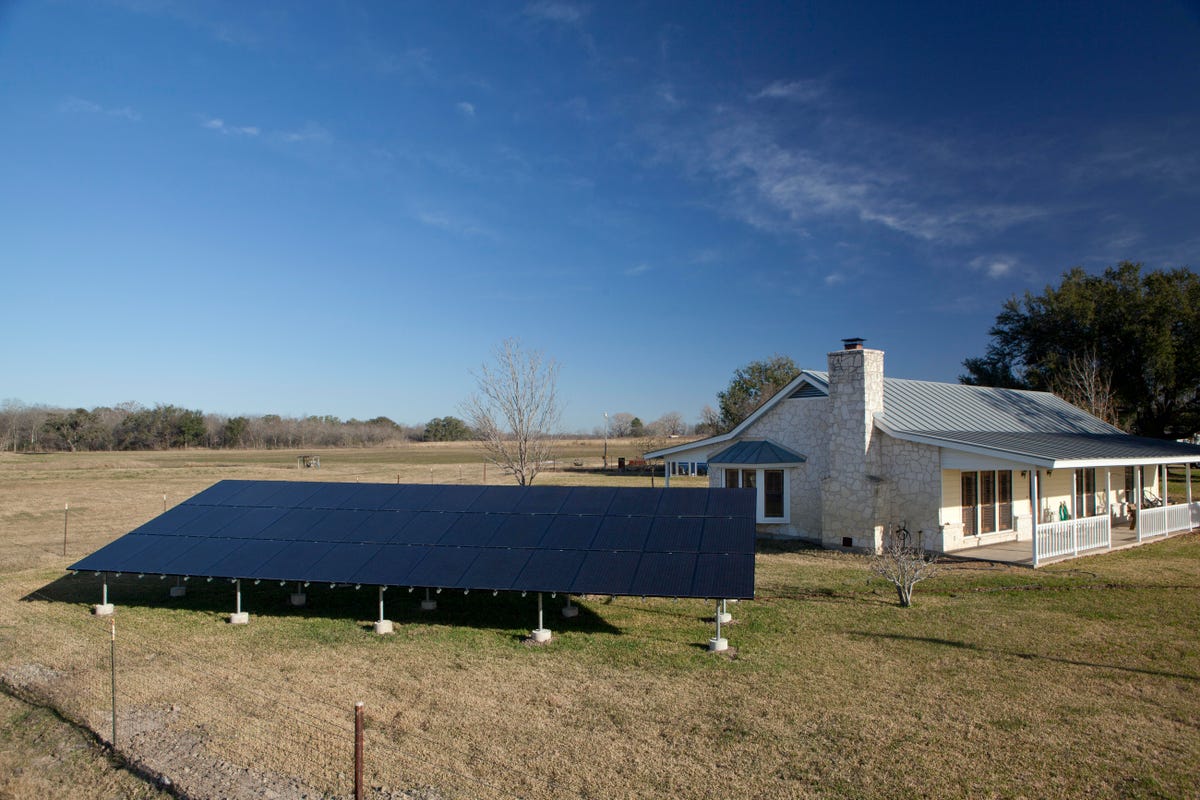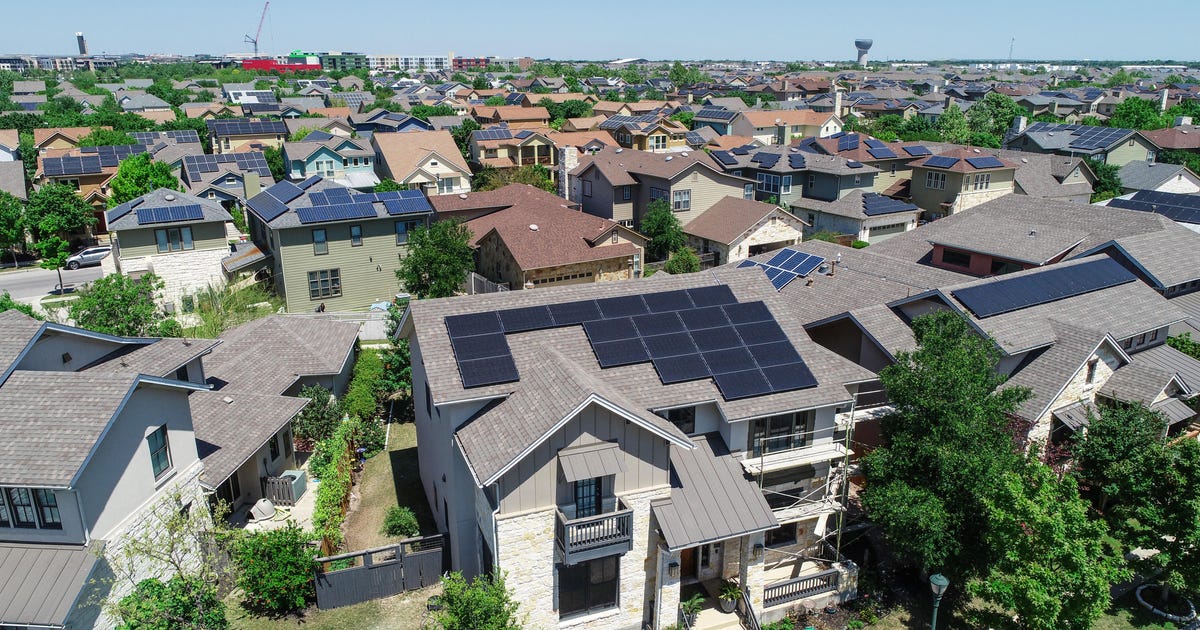Solar panels should work well in the South — it has a climate marked by heat and sunshine — but some states have yet to take advantage of the technology. While several states, such as Louisiana and Texas, land in the middle of the pack for solar installations, others, including Alabama, are nearly last. Like in any region, how quickly a state installs solar panels depends on a combination of incentives, demand and the financial sense that solar makes.
Despite the lackluster adoption rate in some parts of the south, the region as a whole has strong potential for residential solar panels.
Read CNET’s coverage of other regions’ solar potential: New England, the East Coast, the Midwest and the West Coast.
The cost of electricity
For the purposes of this article, the South includes Alabama, Arkansas, Kentucky, Louisiana, Mississippi, Oklahoma, Tennessee and Texas, based on the US Energy Information Agency’s divisions of the United States.
The cost of electricity ranges from 9.67 cents per kilowatt-hour in Louisiana to 12.57 cents per kilowatt-hour in Alabama, according to the EIA. That’s a relatively narrow range toward the bottom of the statewide averages for the United States.
The average monthly electricity bill across the south costs between $109.07 (Oklahoma) to $143.95 (Alabama). The rest of the region has average bills of $110.33 (Arkansas), $116.07 (Louisiana), $116.62 (Kentucky), $125.70 (Tennessee), $128.08 (Mississippi) and $132.59 (Texas). Electricity in the South costs an average of $1,300 to $1,700 over a year, though electricity prices, like nearly everything else, are in flux right now.
Advertiser Disclosure: CNET’s corporate partner, SaveOnEnergy, can help you find the right energy fit for your home. The SaveOnEnergy marketplace helps you search, compare, sign up and save on the right energy fit for your home — all for free. If you’re interested in solar, answer a few questions to get an exact price quote from our solar advisors.
The cost of solar panels
Most commonly, the cost of solar panels is measured in dollars per watt. To figure out the cost of a solar panel array, simply take the total cost of installation and divide it by the capacity of the system in watts.
The national average cost for solar panels is $3.28 per watt, according to the analysts at Wood Mackenzie. Because averages from different sources get their information from different places, it’s not always possible to compare averages one-to-one. Statewide averages from SolarReviews.com are significantly lower than Wood Mackenzie’s. Alabama’s average solar cost is $2.45 per watt. Arkansas is $2.63; Kentucky, $2.34; Louisiana, $2.38; Mississippi, $2.64; Oklahoma, $2.62; Tennessee, $2.49; and Texas, $2.77.
Part of the difference in prices could be due to the fact that, while solar panels costs have fallen overall, hardware costs have fallen much faster than soft costs such as labor and marketing. Local incentives also affect the cost of solar panels.
The South as a whole offers weaker incentives than some other parts of the country, but living in the South doesn’t exclude you from one of the most valuable incentives available: the US federal tax credit for solar. For any solar panels installed through the end of 2031, the federal government will credit you 30% of its cost on your income taxes.
Most of the states in the South offer some net metering arrangement. Tennessee doesn’t have net metering mandated by any regulation, though there are some local programs that compensate you for the electricity you produce. Louisiana operates on a buy all-sell all program, in which a homeowner buys all the electricity they use at the retail rate from their utility, and sells everything they produce at the cost avoided rate, which is typically much lower. Texas, with its unregulated grid, has compensation programs that differ by electricity provider.

Solar panels in the South are likely to be more productive than in some other parts of the county.
King Lawrence/Getty Images
Four states — Alabama, Louisiana, Tennessee and Texas — offer property tax exemptions so you don’t pay taxes on the value added to your property by solar panels. Texas has many incentives, including many rebates for solar panels, but they vary locally so it’s hard to sum up incentives in the state. You can explore incentives specific to your location in the Database of State Incentives for Renewable & Efficiency.
The solar potential of the South
Despite the overall weaker incentives offered by southern states, solar still has potential to pay off there. Louisiana is 20th among states (and Washington, DC) for solar installations per capita. Texas is 24th, Arkansas 38th, Oklahoma 40th, Tennessee 44th, Mississippi 46th and Alabama 50th.
While the southern states don’t all rank very well for solar adoption, solar panels can generate plenty of electricity. One way to measure solar potential is to see how much electricity a square meter solar panel would generate when mounted horizontally. Across the South, according to the National Renewable Energy Laboratory, such a panel would generate five kilowatt-hours per day, which is higher than New England and much of the Midwest. In parts of Texas, the horizontal, square meter panel could produce over 6 kilowatt-hours per day. In parts of Tennessee, it would produce about four.
Another way to measure solar potential is how much of the average electricity consumption could be offset by a typical rooftop solar panel array. For Tennessee, typical rooftop solar could offset less than 60% of the average electricity consumption, the National Renewable Energy Laboratory reported. In Alabama, Arkansas and Mississippi, it’s 60% to 70%. In Louisiana, Oklahoma and Texas, it’s 70% to 80%.
While some of these numbers suggest that solar isn’t a great fit for parts of the south, it’s important to note that these numbers are statewide averages and not necessarily applicable to any one specific house. The success of rooftop solar is affected by the incentives available to you, your electricity consumption and even the angle and direction of your roof. (There’s evidence that incentives have an outsized effect.) Even in states that seem unfriendly to solar, those specifics and more will determine the overall suitability.
Just as with any big purchase, it’s important to find the best fit for your situation. That includes getting multiple quotes, including from local installers. Although these high-level numbers are a great place to start, they shouldn’t be where you end.

